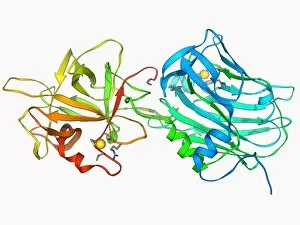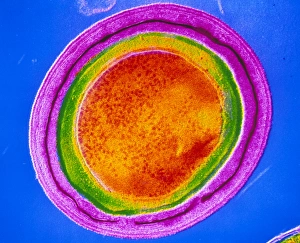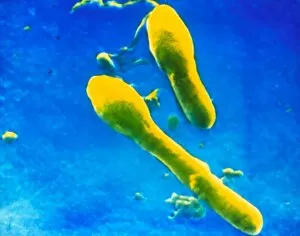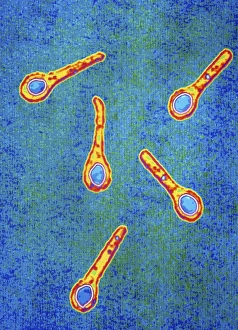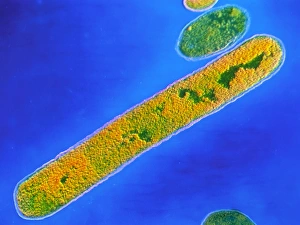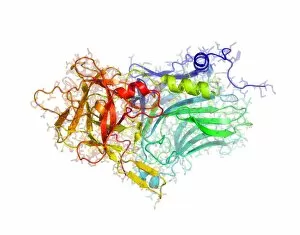Clostridium Tetani Collection
Clostridium tetani: A Microscopic Menace Causing Global Harm
All Professionally Made to Order for Quick Shipping
Clostridium tetani: A Microscopic Menace Causing Global Harm. This gram-positive, anaerobic bacterium, best known as the causative agent of tetanus, is infamous for producing a potent neurotoxin. As seen in this Transmission Electron Microscope (TEM) image, the bacterium's spores (C) are robust and highly resistant to environmental conditions, ensuring their survival in diverse habitats. The bacterium's toxin, Tetanus Toxin C-fragment (F006 / 9223), is a complex structure (E) with a unique mode of action. It binds to motor neuron terminals, blocking the release of neurotransmitters and causing prolonged muscle contractions, leading to the characteristic symptoms of tetanus. The C-fragment structure (F) consists of a heavy and light chain, with the heavy chain containing the catalytic domain responsible for the neurotoxic effects. The microscopic view (A) of the Clostridium tetani bacterium reveals its rod-shaped morphology, while the F/col TEM image (B) provides a closer look at its ultrastructure. Understanding the intricacies of this bacterium and its toxin is crucial for developing effective prevention and treatment strategies against this debilitating disease.



